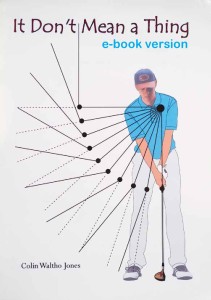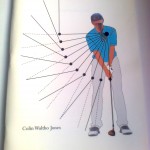29th April 2012
Dear Mark,
I played bowls on Saturday. It was very, very cold but dry – astonishingly. The day was saved by the fact that the much-maligned council had managed, against the odds, to cut the green. The rink we played were reasonably good and had quite a decent skip. Man for man we were well matched, apart from their “third” who was as good as their skip and a bit better than our “third”.
Last week, I couldn’t find the rhythm consistently and as a result I had a bit of a miserable game. It was the first game of the year, and my back was playing up, which may have had something to do with it. I hate playing badly at the best of times but I was particularly disappointed because I was so looking forward to it, especially as I had only managed two games last year.
I was interestingly nervous going into this week’s game because I think I was haunted by the memories evoked by last week’s dismal performance. It seems as if the memories of past humiliations never quite leave you and so the prospect of embarrassing incompetency is ever present.
The beauty of my method is that it prevents the conscious brain from using the plethora of excuses available – lack of practise, inclement weather, heavy green, bad back – which then allows plenty of mental time and energy to, instead, concentrate on simply finding the magical rhythm.
As I considered last week’s efforts, I came to the conclusion that I had over-complicated the imagery of the pendulum; and that I had done so in an attempt to find a short-cut to the rhythm because of my long lay-off. I decided to concentrate this week on simply relaxing at the top of the backswing (and to try to ensure that I swung forward “in one piece”). To find that relaxation, I simply imagined what it would feel like to take a very brief moment at the top of the backswing releasing the tension from the muscles before allowing the forward swing to start. The mental imagery was very simple to evoke, and I pretty much managed it before every shot. Because I was imagining a swing, I imagined a swing that would take the bowl along the path that I had chosen for it to travel, and at the pace I wanted it to travel at. I couldn’t tell you how I chose the particular pace or path; I just let it come to me.
The results were fairly spectacular. I bowled a number of exceptional bowls in often difficult circumstances.
The 21st and last end saw us tied at 15-all. Between me and my lead, we had managed to set a fairly long mark, which led to the inevitable short woods by the front players. We were holding shot with a 2′ wood when it came to our (the skips) turn to bowl. My assessment was that our scoring wood was going to be a very difficult bowl to beat because of the length of the mark, the number of bowls strewn in the way and the fact that it was a winner-takes-all situation. I chose a safe line down the left, outside the line of the short woods and put the bowl just over 2′ behind. My opponent spent quite a long time studying the various options and decided he could find a path just on the inside of the barricade. I thought he would be too tight and would swing right too early and hit the woods on the other side.
However, he was a left-hander and so was able to just about miss the short woods on the left, on the inside, and still hold a line which took his wood right into the head to rest on our counting wood and take the shot. It was a perfect wood and amazing given the pressure of the situation, and the level we play at.
I had one wood left and was staring defeat in the face. The line he had chosen appeared not available to me because I am right-handed, but I decided that I might be able to squeeze something along the same path if I moved my stance to the edge of the mat to give me a little extra angle. Anyway, I had little option because there was no other way I was going to be able to beat his wood. Once I had found the place on the mat that seemed right, and I had envisioned the roll of the ball through the minefield of short woods, I brought back to mind the memory of the rhythm I had used on the last few ends. It felt to me as if I was able to replay the memory of the swing over and over again in an instant. Also, I was able in that same instant, to hone in on the feeling of complete relaxation at the top of the backswing, the sense of supreme easy-ness as I allowed the forward swing to commence; and, finally, the feeling of complete control as the acceleration of the system fleetingly entered my consciousness. I also made myself be aware of being athletically still as my arm swung underneath me. When I was ready, I simply stepped forward and let it happen.
The bowl rolled exactly as I had imagined and made its merry way into the head to rest gently on my opponent’s wood, take shot and release a spontaneous round of applause from some grateful team-mates and polite but envious opponents.
My opponent still had his last bowl to deliver. He took another age to decide that it was too much of a risk to try to bowl another perfect wood through the massed defences of the short woods and that he would be better off bowling a straighter line (where there were more gaps) with a bit of weight to keep it straight and hope to move something in the head. He bowled another snorter and only missed by a fraction.
The lesson here is to do anything to try to find that relaxation at the top of the backswing: it is where the magic lives.
Regards,
Colin


